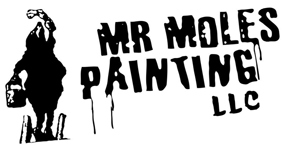A paint sprayer is a helpful tool for applying paint, varnish, stains, lacquer, and other coatings to surfaces and objects. Sprayers can paint walls, furniture, cabinets, and other things quickly and efficiently. Paint sprayers work best on larger surfaces or where a paintbrush can’t reach or will cause an uneven finish.
Choose the Correct Type of Paint Sprayer
You can rent or buy a sprayer at most hardware stores. Paint sprayers come in various types and sizes, from large, professional-grade units to smaller, handheld models. The type of paint sprayer you choose will depend on your job and the type of coating you’ll use. Read ratings and reviews and choose the model that best suits your needs and budget.
Airless paint sprayers are the most powerful type of paint sprayer and are ideal for large projects. These have an electric pump that pumps the paint from a container instead of a separate air compressor.
High Velocity/Low Pressure (HVLP) paint sprayers are the most popular and are great for small projects. These sprayers require an air compressor.
Pneumatic paint sprayers are similar to HVLP sprayers because they also use an air compressor. These types of sprayers are great for painting a range of interior and exterior surfaces.
Tips for DIYers
Prepare the Area
Like any painting project, preparation is critical when using a sprayer. Take extra care to protect surfaces from overspray. Clean and repair the surface you’ll be painting. Protect the area with drop cloths. Apply painter’s tape along the edges to avoid accidentally painting molding and trim. When working outdoors, consider the amount of wind and the wind direction. Strong winds can change the direction of the spray, so cover landscaping, lawn ornaments, concrete walkways, and surfaces you want to protect. Considering your neighbor’s property is essential since overspray can drift significantly depending on wind conditions.
Follow All Safety Precautions
Carefully read the manufacturer’s directions and follow all operating instructions and safety precautions. It’s essential to work in a well-ventilated area and wear the proper safety equipment. A respiratory mask, safety goggles, and gloves are recommended. Long-sleeved clothing offers additional protection.
Test the Sprayer
Using a paint sprayer takes some practice, and it’s essential to take your time to avoid accidentally spraying surfaces you don’t want to cover in paint. Before applying paint, test the loaded sprayer on scrap wood or cardboard. Testing lets you get a feel for the sprayer, spray pattern, and speed. Adjust the paint flow and spray pattern until you find the right one. Change tips until you get the desired results before starting your project.
Select The Right Size Tip
The tip is an essential factor when setting up your paint sprayer. The tip helps control the width and speed of the paint spray. Larger tips are made for thicker viscosity fluids, like heavy latex. Medium tips are commonly used because they are the best choice for oil-based and latex paints. A fine tip is best when working with thinner liquids such as stains and lacquers.
Drawbacks for DIYers to Consider
Paint sprayers are an invaluable tool for professional painters. They are faster, more efficient, and produce a smoother, more even finish than traditional methods. With plenty of time and practice, a handy homeowner can achieve good results using a paint sprayer. But there are a few drawbacks for DIYers to consider.
Fine paint particles don’t all stick to the surfaces being painted. A significant percentage of the paint ends up airborne, where it can drift and settle onto everything in sight. This means you’ll waste a significant amount of paint, depending on the application. You’ll need extra time to mask and cover up anything you need to keep paint free. Outdoor painting is especially risky. Overspray can end up on your roof or shrubs or drift onto your neighbor’s car or home.
Cleaning up and storing a paint sprayer will take extra time. You’ll need to flush the paint from the pump and hose and clean up the spray gun. And if you’re using oil-based products, you’ll have to store or recycle a gallon or two of solvents left over from the cleaning process. Hiring a professional painter to handle the job is best unless can devote a significant amount of time to learning to use a paint sprayer properly.
Hire a Professional Painting Contractor
The benefits of hiring a professional paint contractor are numerous. Save time, energy, and money by hiring an experienced painting company. When you hire local painting professionals, you’ll benefit from their expertise and support your local community. The team members at Mr. Mole’s Painting LLC are trained to communicate with clients and ensure your satisfaction.
Mr. Mole’s Painting LLC offers interior and exterior painting services for commercial and residential properties. We provide in-person and virtual quotes for your convenience. Contact us at (218) 368-2560 to discuss your next painting project.
